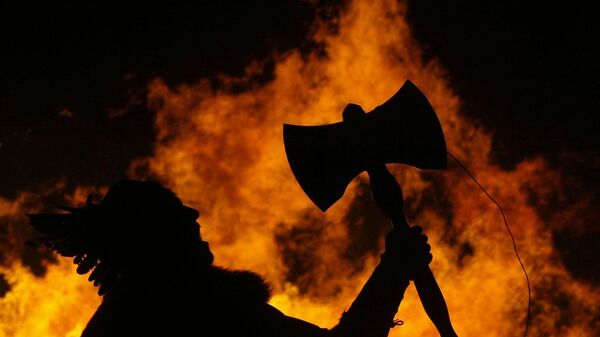Danish archaeologists have uncovered a new piece of a Viking grave puzzle, The Copenhagen Post reported. For years, scientists believed that the man discovered in Gerdrup was a slave who was sacrificed in order to follow his female owner into the afterlife. However, a DNA test recently revealed that the two were actually a mother and a son.
"It’s an incredibly exciting and surprising result we have here. We need to thoroughly consider what this means", Ole Kastholm, an archaeologist and senior curator at the Roskilde Museum, told a local TV programme.
Scientists say the man was likely to have been hung. Before being laid to rest, his body was tied up.
Although the finding of the study was rewarding for the scientists after decades of searches, they say it poses an even greater mystery – why the two were buried together.
"We need to look at whether other graves and other source material from the Viking Age could reveal some patterns that might help us solve this case”, said Ole Kastholm.
Some researchers suggested that the key to solving the mystery could be hidden in an old Icelandic saga, which tells the story of the sorceress Katla and her son Odd. They were executed – Katla was stoned to death, while her son was hung.
Supporters of this theory say that the woman in the grave had a staff just like Katla, who was buried with a rod that she reportedly used as a magic wand.
The archaeologists say that they plan to conduct more research, which could finally help them solve the decades-old mystery.





